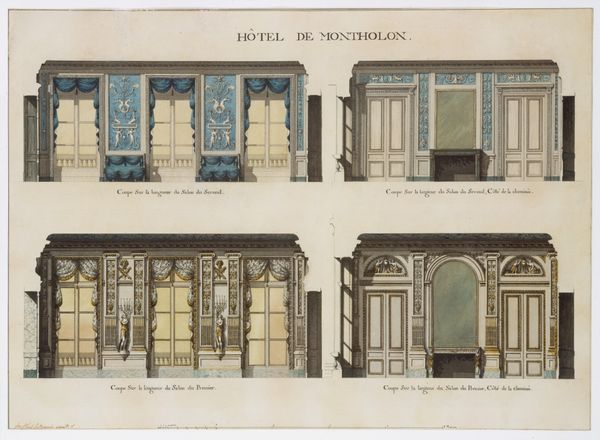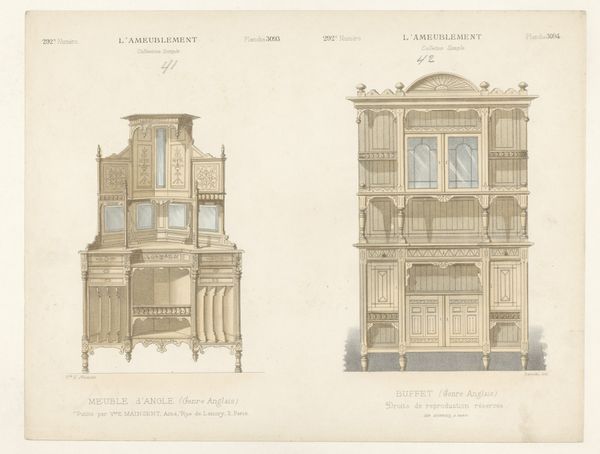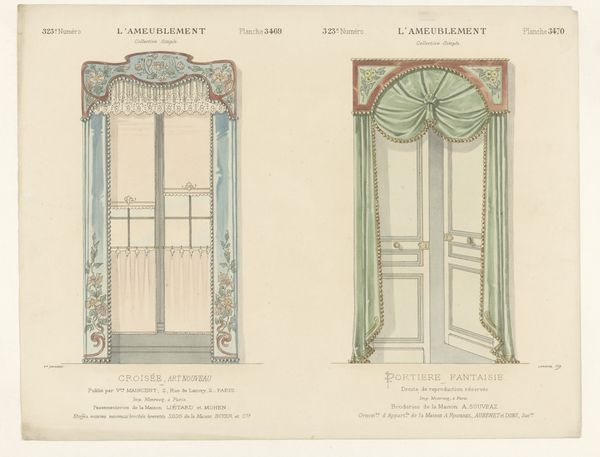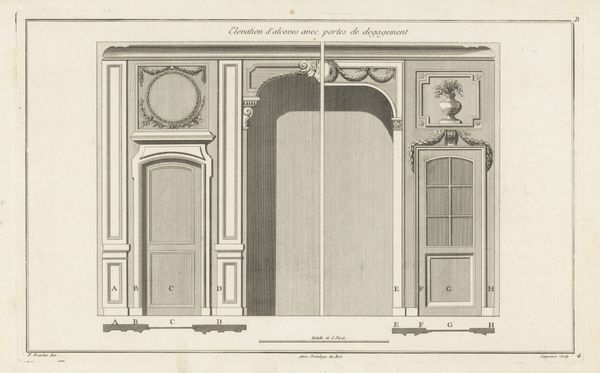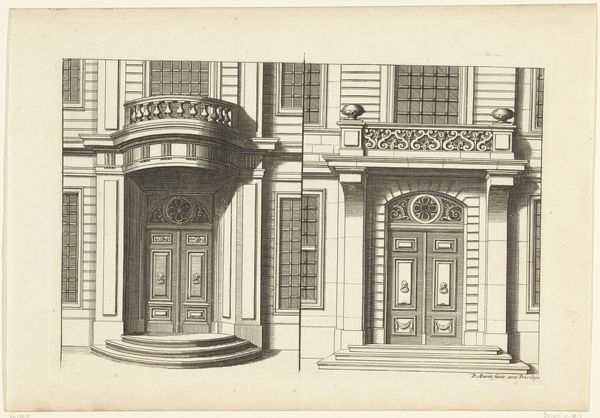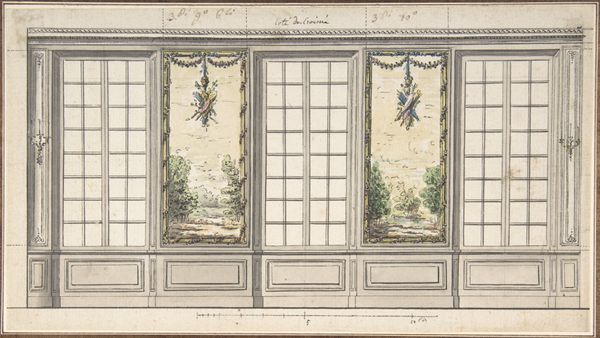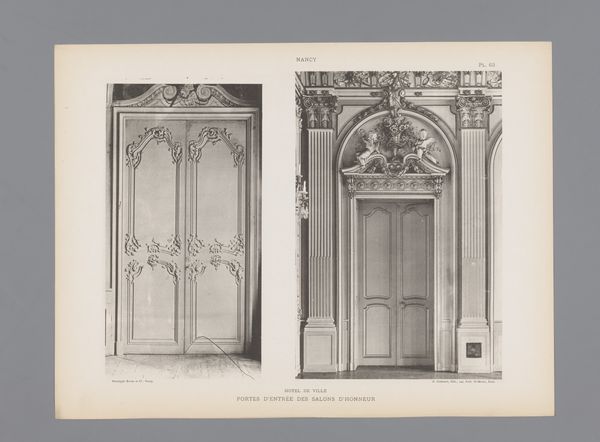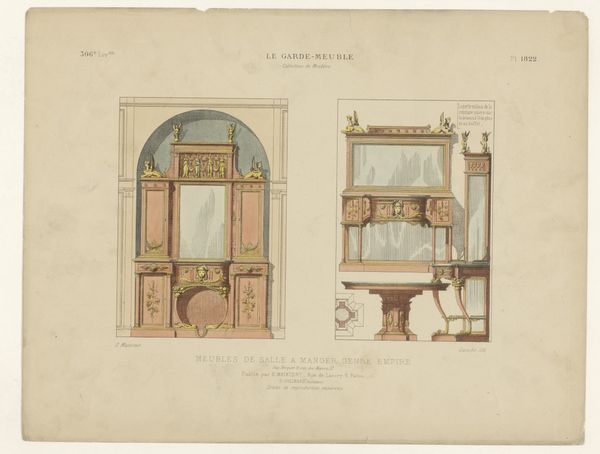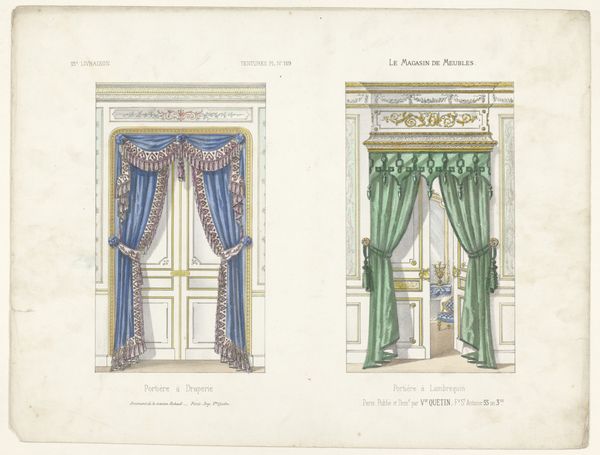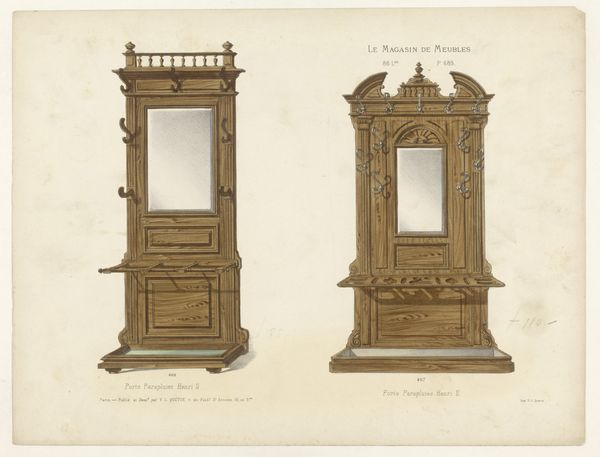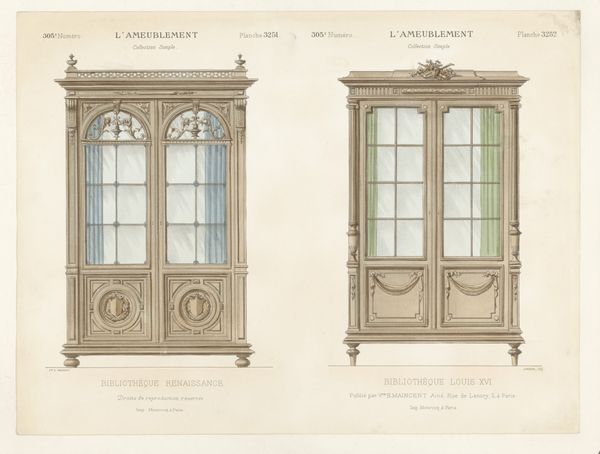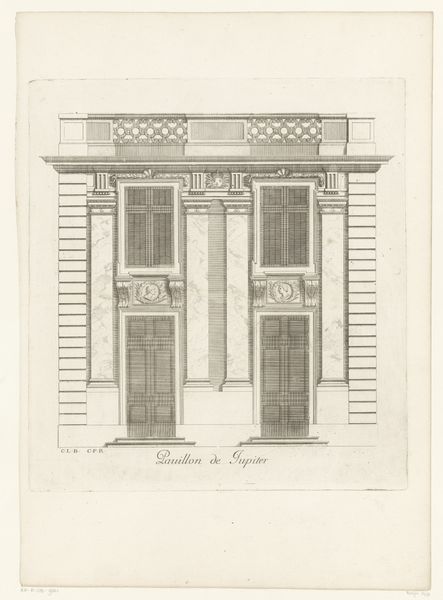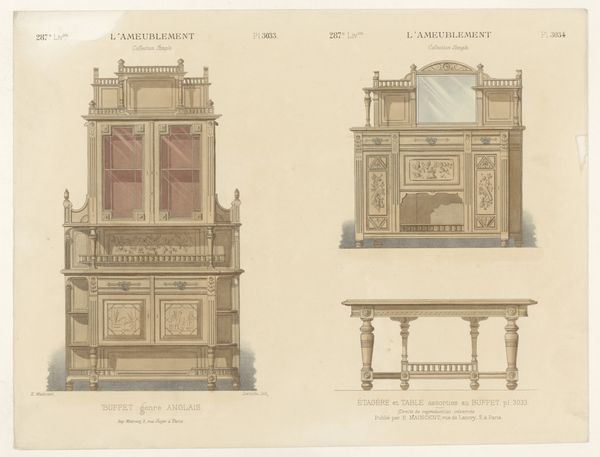
Longitudinal and Cross Sections of the Dining Rooms of the Hôtel de Montholon 1785 - 1786
0:00
0:00
drawing, print, architecture
#
drawing
#
neoclacissism
# print
#
geometric
#
cityscape
#
architecture
Dimensions: 15 3/4 x 21 5/8 in. (40 x 54.9 cm)
Copyright: Public Domain
Curator: Welcome. Before us is Jean-Jacques Lequeu's "Longitudinal and Cross Sections of the Dining Rooms of the Hôtel de Montholon," created between 1785 and 1786. Editor: My first impression is of serene elegance… balanced symmetry, but strangely detached, as if these rooms exist only as idealised concepts rather than tangible spaces. Curator: Indeed. Lequeu, a key figure of Neoclassicism, crafted this architectural drawing using print and drawing techniques. Let’s consider that in his time, labor-intensive printmaking served not only wealthy patrons but increasingly large numbers of middle-class consumers. Editor: Precisely. Observe how he uses geometric precision, organizing the image into four distinct interior views. Each focuses on architectural details, like the recessed sculptures and varying drapery styles. Note his controlled color palette. Curator: We should remember Lequeu was a draftsman, who did not attain professional recognition. Architectural drawings became another outlet for aesthetic expression to a wider audience due to improvements in the craft of reproductive printmaking at the time. The Hôtel de Montholon became reproducible and transportable, unlike, say, marble. Editor: Absolutely. Consider the semiotics of these features. The balanced windows and symmetrical arrangement of doorways represent order. What philosophical meanings does this ordered symmetry suggest? What underlying philosophy can you infer, or even challenge? Curator: Well, the prints reflect social tensions because the labor that created them—and sustained the lavish Hôtel de Montholon itself—would never afford these luxuries. These visual prints conceal a reality of uneven wealth. Editor: That tension is embedded within the construction of this work. By employing precise draftsmanship, the materiality creates a sense of detachment that invites scrutiny. Curator: And considering how prints circulated architectural concepts to diverse socioeconomic layers reveals an entire cultural landscape beyond these meticulously designed walls. Editor: Agreed, thinking about this idealized view from that socioeconomic position adds a welcome tension and further nuances how we understand this formal portrayal of luxury and societal aspirations. Curator: By blending our material and formal lenses, we gain a better appreciation of Lequeu's world, and ours.
Comments
No comments
Be the first to comment and join the conversation on the ultimate creative platform.
